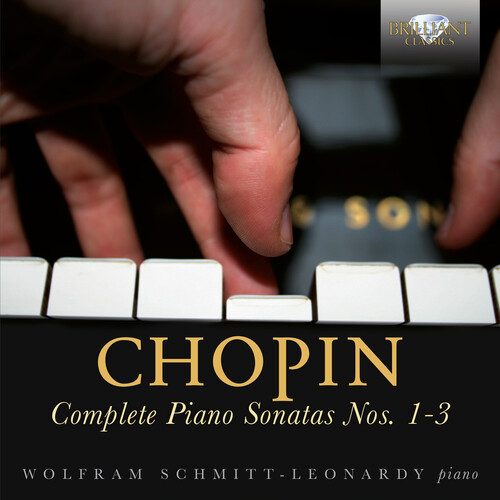Show results for
Deals
- 4K Ultra HD Sale
- Action Sale
- Alternative Rock Sale
- Anime sale
- Award Winners Sale
- Bear Family Sale
- Blu ray Sale
- Blues on Sale
- British Sale
- Classical Music Sale
- Comedy Music Sale
- Comedy Sale
- Country Sale
- Criterion Sale
- Cult Films sale
- Drama Sale
- Electronic Music sale
- Horror Sci fi Sale
- Jazz Sale
- Kids and Family Sale
- Metal Sale
- Music Video Sale
- Musicals on Sale
- Mystery Sale
- Naxos Label Sale
- Page to Screen Sale
- Paramount Sale
- Rap and Hip Hop Sale
- Reggae Sale
- Rock
- Rock and Pop Sale
- Rock Legends
- Soul Music Sale
- TV Sale
- Vinyl on Sale
- War Films and Westerns on Sale

Complete Piano Sonatas 1-3
- Format: CD
- Release Date: 8/18/2017

Complete Piano Sonatas 1-3
- Format: CD
- Release Date: 8/18/2017
- Label: Brilliant Classics
- UPC: 5028421952093
- Item #: 1912629X
- Genre: Classical
- Theme: Romantic Era
- Release Date: 8/18/2017

Product Notes
Wolfram Schmitt-Leonardy has gradually built a distinguished catalogue of recordings over the years on Brilliant Classics, and each new release from this German pianist tends to be welcomed in effusive terms by the international press. His accounts of Chopin have met with particular praise. A previous release of the Ballades, Impromptus and Preludes (BC95210) was celebrated by Classics Today as achieving 'a fusion of impassioned ardour and classical textual rigour... The best of Schmitt-Leonardy's Chopin adds up to a stimulating and compelling listening journey well worth travelling, even if you've heard these works hundreds of times.' Individual discs of Mendelssohn (BC93975), Schumann (BC93136) and Brahms (BC92512) have likewise attracted admiring comments. According to Gramophone, 'Wolfram Schmitt-Leonardy's superb technical and musical command holds unflagging interest throughout the [Brahms] variation sets, which easily hold their own among the top versions available.' With these new recordings, made in 2011 and 2015, Schmitt-Leonardy returns to Chopin, and to 'his wildest children' according to Schumann: a comment which has been much parsed for it's implications of structural incoherence as well as indomitable passion. In truth, Chopin's struggle with the larger, multi-movement form has by no means failed, but rather resulted in a more accurate and elaborated mosaic of interrelations, coherencies and references, which cannot be discerned by casual listening or glancing at the scores. Chopin's ability to balance these elements comes from neatly hidden formal concessions and the use of several compositional tools found in the music of Bach; combined, these aspects award Chopin's sonatas continuity. Even if the First Sonata is the work of a student, it nonetheless demonstrates some of those Bachian connections and a lyric poise which would come to full bloom in the Second. This work is centred around the grave Funeral March which has become perhaps Chopin's best-known individual piece. Bachian principles of counterpoint and polyphony are even more richly satisfied by the final sonata of the trilogy, at least until the grand and sweeping passion of it's concluding Rondo.

